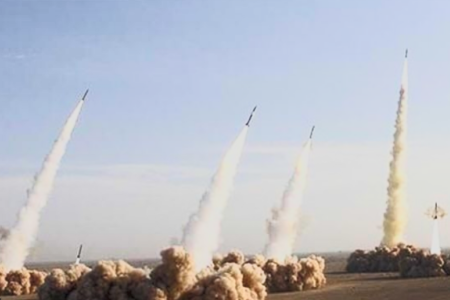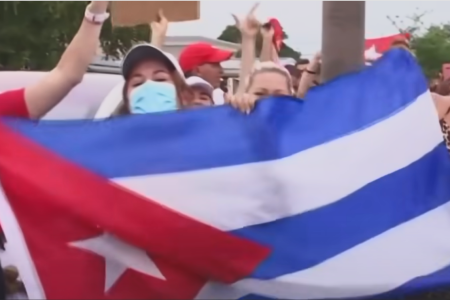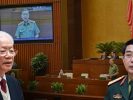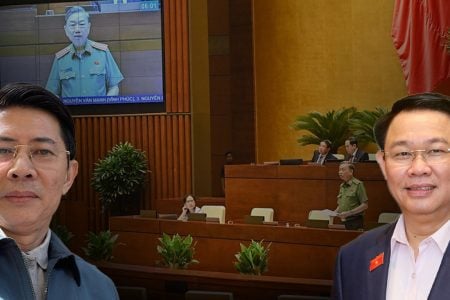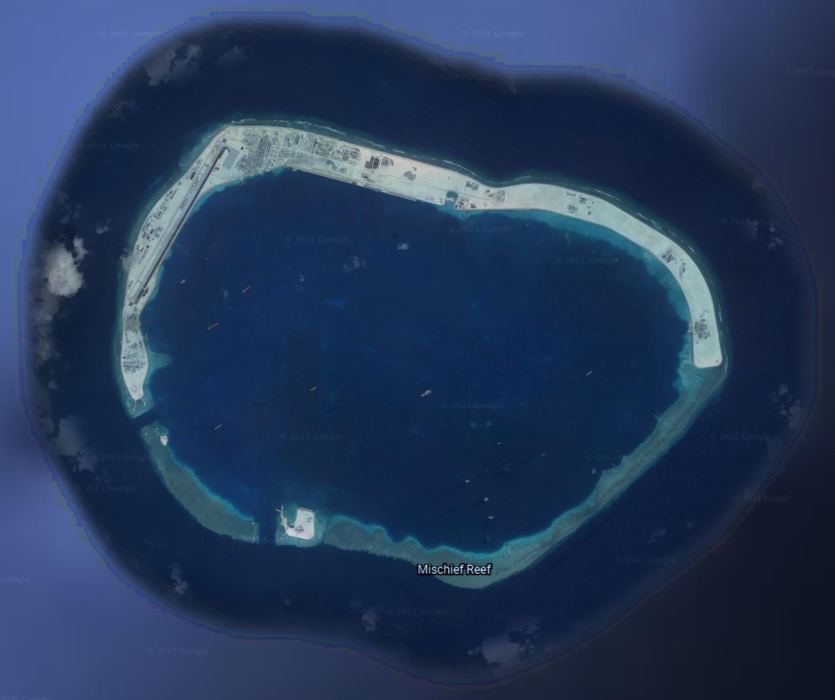
“Legal War” in “Tactical Three Races“
In its “Chinese dream,” China always aims to become a maritime power, and the East Sea (South China Sea) is the gateway for China to reach the world’s seas and oceans.
The problem is that China has no legal basis to support its ambition, even, the whole world condemns their so-called “cow’s tongue line.” The arbitral tribunal in the case of the Philippines against China also stated that it rejected China’s claim of “historic rights” within the “cow’s tongue line.”
However, China wants to use its strength to turn the “cow’s tongue line” into reality to satisfy its superpower dream. But China also avoids waging a military war, as a military war now would put China at a disadvantage. Therefore, China advocates the application of the “Three strains of strategy” i.e. 3 wars in addition to the military war, including “psychological warfare, media warfare, and legal warfare.”
“Psychological war” is a psychological impact on the subject, for example, the Global Times claims to threaten to “attack and occupy Vietnam in 21 days or China always threatens Taiwan by sending many planes into its airspace, along with massive military exercises in the Taiwan Strait. “Media war” is using the media to repeat Beijing’s claims of being “a peace-loving country...”
As for the “legal war,” how does China proceed? While China basically has no legal basis in the South China Sea.
Intentionally maintaining ambiguity
On August 7, 2009, China sent two notes to protest against Vietnam’s separate extended continental shelf report and the joint report in the overlapping area of Vietnam and Malaysia. Included in these two notes were their infamous “cow’s tongue line” map.
However, the Chinese government has never officially and clearly explained to the world what the legal status of the “cow’s tongue line” is? Chinese scholars and officials offer many different explanations. An argument commonly used by the Chinese is that of “historic rights” to all the waters within the “cow’s tongue line” which began with a Taiwanese scholar named Fu Kuncheng, and then tt was promoted and applied by Wu Shicun- a famous Chinese official and scholar. This argument is also “acclaimed” by many Chinese scholars, even Ms. Xue Hanqin – then a judge of the International Court of Justice (ICJ) also made in her statement.
In addition, in many Chinese statements and notes, they always use ambiguous words, deliberately confusing. This is a “trick” in their “legal war.”
The ambiguity appears to be Beijing’s “deliberate tactic.” Not only for the “cow’s tongue line” but also in their internal legal documents, this ambiguity is also evident.
Recently, many scholars have pointed out the ambiguity, not clearly explaining what is “the waters under China’s jurisdiction” in their new Law on Coast Guards passed earlier this year.
An article on the Jamestown site (1) also pointed out that not only the Law on Coast Guards but even China’s Law on Maritime Traffic Safety has similar ambiguity. Specifically, Article 2 of this draft amendment first provides that “activities related to maritime traffic safety in the coastal waters of the People’s Republic of China” are subject to this law. The term “coastal waters” is defined as “internal waters, territorial sea and other waters under the jurisdiction of the People’s Republic of China” under Article 115. However, the latest version has replaced the term “area” coastal waters” with “seas under the jurisdiction of the People’s Republic of China” but the law does not provide a definition for this term. China’s use of such ambiguous terms gives China flexibility in revising the legal basis of its maritime claims in the South China Sea and justifying maritime claims beyond those of the South China Sea. UNCLOS.
Using scientific tricks to attack

The ambiguity of the “cow’s tongue line” was “smashed” by the 2016 South China Sea ruling in which the Arbitral Tribunal clearly affirmed that China’s claim of “historic rights” to the U-shaped line had no legal basis and violates the provisions of UNCLOS, it is therefore null and void.
Having suffered a painful defeat with the South China Sea Jrulingt, China has launched money to mobilize many famous international scholars such as Stefan Talmon (Professor of International Law at the University of Bonn, Germany) or Mark Valencia (USA), Same Bateman (Professor of International Law at Bonn University, Germany), etc. to coordinate with a team of Chinese scholars to “attack” on the ruling. This is also a “trick” of China in their legal battle, that is when they are defeated or legally weak, taking advantage of academic freedom in the West, they will use the majority to “attack” overwhelming publicity to cover their legal weakness.
Use “two-sided arguments”
In addition, Chinese experts often use “two-sided arguments” to serve their propaganda purposes.
Specifically, after the Philippines sued China to the Arbitral Tribunal, Beijing issued a policy “China upholds its position to settle disputes through negotiations between China and the Philippines on the South China Sea issue.” It read: “In 1951, the San Francisco Peace Conference decided that Japan would renounce all rights, titles and claims to the Nansha (Spratlys) and Xisha (Paracels). In 1952, the Japanese government officially declared that it had renounced all rights, titles and claims to Taiwan, Penghu, as well as the Nansha (Spratlys) and Xisha (Paracels).” This policy does not explicitly refer to the 1951 “San Francisco Peace Treaty” or the 1952 Sino-Japanese Peace Treaty.
In fact, the San Francisco Peace Treaty was signed between Japan and 48 other countries on September 8, 1951. Article 2 of the San Francisco Peace Treaty states all the territories relinquished by Japan, including the Spratlys and Paracels. However, the treaty was signed without the presence of the the red China (Communist Party of China) or the Kuomintang due to disagreement over which party could represent China.
The red China and Taiwan took very different approaches to the San Francisco Peace Treaty. China completely denies the legitimacy of the San Francisco Peace Treaty on the grounds that it was excluded from the negotiation process and considers the treaty to be illegal, invalid and unrecognizable. In contrast, the Kuomintang decided to sign a separate treaty with Japan, called the Sino-Japanese Peace Treaty of 1952.
We can clearly see the contradiction in China’s attitude: on the one hand, denying the legitimacy of these treaties; on the other hand, claiming sovereignty over the South China Sea is partly based on these two treaties.
What should ASEAN countries do?
What can the ASEAN states directly involved in disputes with China in the South China Sea do to deal with this kind of “legal warfare” by China?
China’s huge weakness for maritime ambitions is legal. Because there is no legal basis, China has used “legal war” to cover its weaknesses.
Therefore, ASEAN countries can “dig deep” into this weakness of China. On the one hand, ASEAN countries need to strengthen their media power internationally, denounce this illegitimacy of China, and unmask China’s tricks and tricks in the so-called “legal war“.
On the other hand, the experience from the Philippines has shown that, as an effective measure to show legitimacy, against China’s unreasonable claims with arrogant arguments, ASEAN countries need to learn from the Philippines to find ways to initiate take China to arbitration as the Philippines did, or can seek explanations from other courts such as the International Tribunal for the Law of the Sea (ITLOS) or the International Court of Justice (ICJ). The interpretations of these Courts will bring great righteous power to the ASEAN countries, and “smash” China’s absurd arguments.
Thoibao.de (Translated)







